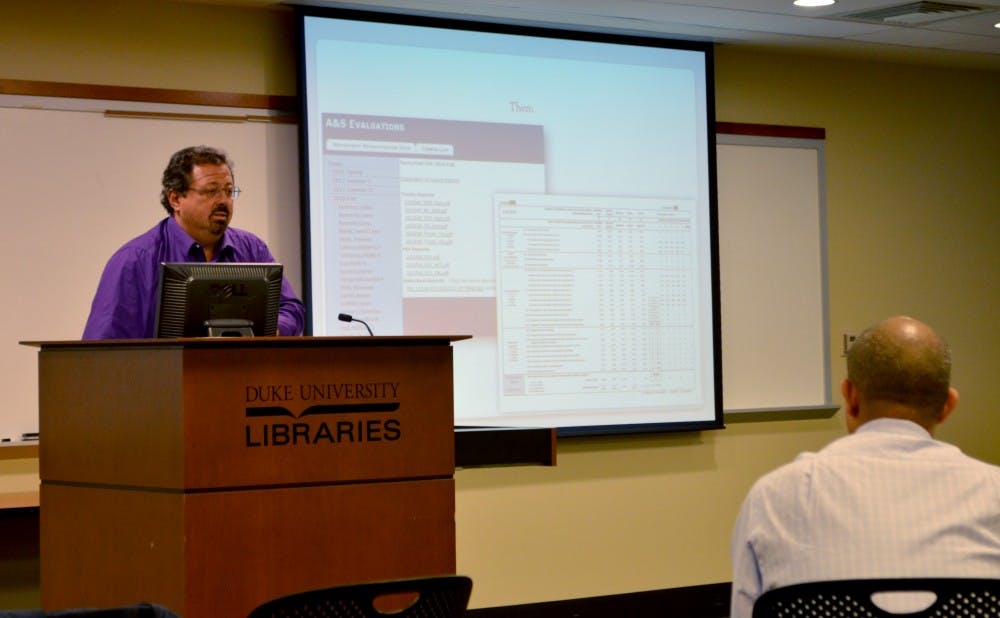Gone are the days of evaluating professors via pencil and paper—beginning this semester, course evaluations will be done online.
The change follows two pilot programs and input from faculty, students and administrators. In addition to saving 20,000 sheets of paper per semester, it will give faculty greater access to more specific data and allow students to provide more useful feedback, said Lee Baker, dean of academic affairs for the Trinity College of Arts and Sciences and associate vice provost for undergraduate education. The new system was presented to faculty at a forum Tuesday in Perkins Library.
“It’s an environmentally responsible thing to do,” Baker said. “But we took a conservative approach in terms of the questions. Essentially, these are the old questions sort of revamped and then addressed to our new modes of inquiry.”
The content of the evaluations is largely similar to that of years past, but includes a few additions. Students will now answer questions specific to the course’s modes of inquiry, including whether or not they feel the course was correctly coded, and mark whether or not they would recommend the class to their peers. The form will also include a space for students to evaluate themselves, saying what grade they believe they will receive.
But more changes to the evaluations will likely be made in the future, said Keith Whitfield, vice provost for academic affairs.
“These are not the perfect questions,” Whitfield said. “Part of trying to move this online and move the assessment process forward is to say, ‘You know, there’s some really interesting things we can do.’ So let’s get the data and start asking interesting questions.”
Putting the system online will give them a better opportunity for data gathering and analysis, Baker noted.
“The intention of the folks who worked on this is to say, ‘Once we have the system, we’ll give you some data,’” Whitfield said. “And then the faculty should start talking about metrics that would be better than what we have.”
For the system to work, however, it will be essential to have a high response rate. Whereas evaluations were done during class time in years past, this does not necessarily have to be the case with the online system, said Matt Serra, director of the Arts and Sciences Office of Assessment. Students will be able to access the forms from ACES.
“That’s the benefit of this system—you get more useful feedback, but also you get to choose how you want to administer it,” Serra said.
Baker noted that professors will still be able to set aside time in class for students to complete the evaluations, which will likely be the most effective way of achieving a high response rate.
Doing course evaluations online means that the results will no longer be anonymous, as they will be connected to the students’ ACES accounts, but they will still be kept confidential and secure, Baker said. He added that faculty will not be given access to the evaluations until grades have already been submitted.
The system will also allow students to include longer, more in-depth comments with their evaluations. Faculty will be allowed to opt in or out of displaying the comments on ACES as part of the evaluation available for student view.
“This is a work in progress,” Serra said. “We see this as just a first attempt.”
Get The Chronicle straight to your inbox
Signup for our weekly newsletter. Cancel at any time.

